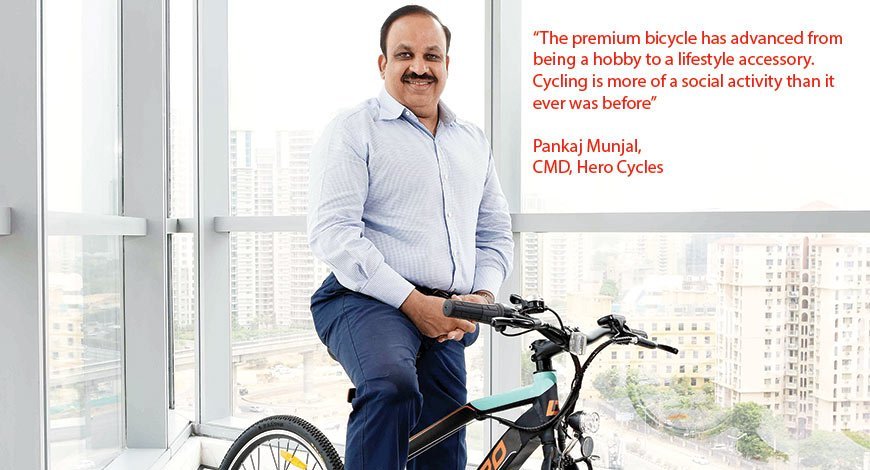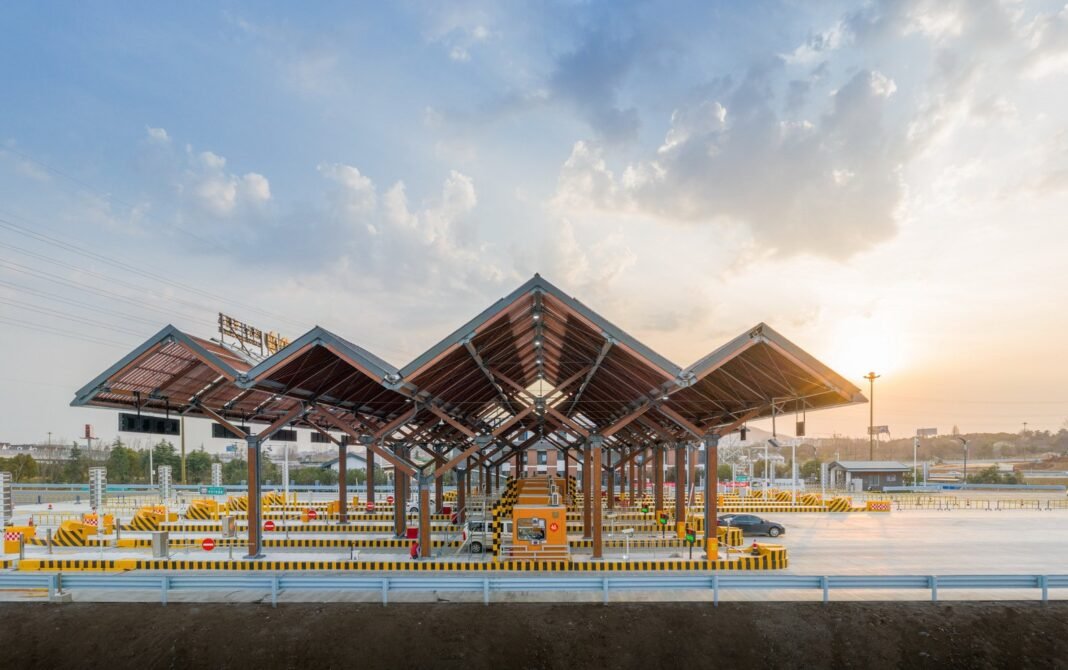In 2019, HMC- HERO Motor Company, under the leadership of Mr. Pankaj Munjal, CMD embarked on the ambitious project of giving shape to their dreams at HIP (HERO Integrated Park) Cycle Valley in Ludhiana to produce 4 million bicycles per year for Domestic & Global exports. A 100-acre piece of land was procured from State Govt of Punjab to setup this project at Dhanansu near Ludhiana in Punjab.
Conceptualization
The Phase -1 of this project has been commissioned in April 2021 thereby exponentially adding to the current capacity of 6 million bicycles spread over a network of plants located in Ludhiana (Punjab), Ghaziabad (UP) and Bihta (Bihar). The project has been conceptualized to cater to the comprehensive needs of a cycle manufacturing facility within one campus wherein the component suppliers shall also be housed along with state-of-the-art research & development and testing facilities of global standards.
The brief from the client’s end was very clear & simple from day one, they wanted a Smart & Sustainable manufacturing facility in sync with Industry 4.0 standards.
The project was entrusted to Minda Infrastructure on a comprehensive Design Build model. studio LINEDESIGN projects LLP a New Delhi based multi-disciplinary architecture firm, led by Architect Gaurav Varmani and his team, have created an entirely unique and eclectic design identity for the flagship facility of HERO Motors plant, designed & executed to bag the highest level of Green Building certifications.
The masterplan evolved keeping in mind the present & future needs of the project. Expandability, adaptability & Sustainability were the key drivers, and this involved a lot of research and development to achieve the optimized spatial built form designs and specifications for this nature of industry.
The Structure
The production facility is divided into three main blocks.
- First one is the Weld shop facility (42m x 176m ~ 78000 sq. ft) where the basic raw material comes from Raw material warehouse, it is cut, welded, machined, finished, and prepared for further treatment.
- The second shop has the PT lines and the paint shop (56m x 176m ~ 1,72,000 sq. ft). It has been separated out due to safety concerns and to keep the plant free from any eventualities and risks. Since paint shops are susceptible to fire and other potential risks by way of use of highly combustible materials & processes.
- The Central building – CNS (Central-Nerve-Spine) – (177m x 90m ~ 1,10,000 sq. ft) houses the Raw material stores, Assembly shop & Finished Goods stores which have been separated out again to de-risk the challenges posed by way of a large plant. This building also houses the administrative setup for the whole plant.
Since large spans were needed due to the various processes, the span required was quite large upto 30 meters and there was no other option and it was an obvious choice to go for steel for its versatility and large scale, large span of rings.
Steel Preferred
PEB is one of the first choices when it comes to sustainable and eco-friendly buildings. Steel is the preferred material for all prefab structures and Pre-Engineered Buildings use steel which is more than 70 per cent recyclable. These buildings are cost effective, energy efficient and provide better quality environment as they are cooler in hot conditions due to the favorable roofing material, suitable insulation, and natural ventilation.
The use of skylights and solar panels mounted on rooftops of industrial buildings will meet daylight and captive power requirements which will reduce their dependence on power supply from other sources and at the same time reduce emissions and gain carbon credits under clean development mechanism. Effective usage of insulation material, louvers and other materials also help in making PEB one of the most preferred green buildings.
The wall sheeting in the plant was started right from the bottom. There is 400mm brick wall and then the wall sheeting is placed just above that give a very clean look to the exterior and is faster to build. Various software’s were used to develop the designs which included AutoCAD, Revit, STAADPRO and other proprietary structure design softwares for PEB design.
The project is spread over 35 acres of land of the overall HIP Valley spread over 100 acres and have constructed around 3.86 million sq ft. of built-up area.
Specifications
- Building Geometrics –PEB Structures
- Weldshop Building – 42m x 176m
- Paint shop & Warehouse Building- 56m x 176m
- CNS Building (Central Nerve Spine) – RM/ Assembly & Finished goods warehouse- 177m x 90m
- Roof Slope – 1:20
- Roof sheet typology- Standing seam
With such sustainability measures, working with steel also gave the upper hand on creating large spaces without columns.
Features
The endeavor was to practice and create a sustainable architecture that remains sensitive to its surroundings and user experience.
Another construction strategy that was implied was the use of High SRI material for the roof i.e., Precoated Galvalume sheets with bubble wrap thermal insulation. This led to the reduction of heat island effect inside the factory. The effort of putting the energy efficient lighting design under the efficient building envelope design and provision of renewable energy resulted in obtaining a substantial 46 per cent of savings on energy.
The salient features of this one-of-a-kind building included the provision of renewable energy. The Solar Panels were installed on the rooftop that contributed to more than 10 percent of the total annual energy consumption of the factory. Another milestone that was set by the team was the provision of an integrated rainwater harvesting system and Zero Liquid Discharge Treatment Plant on-site. This helped in treating 100 percent of the wastewater generated and recycled the same for both process and horticulture requirements in the harsh hard terrains of Western Plateau’s of India.
Apart from the sustainable provisions while constructing the factory, more than 35 percent of the natural topography was preserved on site. Eco-friendly refrigerants were used while catering to the universal design approach in sync with latest Global guidelines on Green sustainable environments. The other non-process waste was managed efficiently by the waste management plant that included the use of 13 percent of recycled material.
The project was started and completed within a short span of 15 months from the date of groundbreaking. Except for a few challenges during the Covid pandemic we were on track and immediately once the lockdown opened, we were able to commission the project. Since some areas were left incomplete when the lockdown happened.
Learnings
The overall experience from the project had been very satisfying and enriching. The team understood new technologies and processes, since the Minda group was also entering in this business for first time lot of research and development went into the design evolution and we specially design certain innovative systems to extract out the fumes from the die casting machines to deliver maximum comfort to the operators inside the plant.
Since the process involves die casting and melting furnaces the temperature rises to up to 60 degrees plus in the workspace environment, so it is very important to consider worker comfort and also ensure that the production shop remains dust free. Another important consideration is to ensure Zero water leakages, since aluminum molten metal in furnaces is susceptible to flash blasts in case of water coming in contact with the molten metal.







